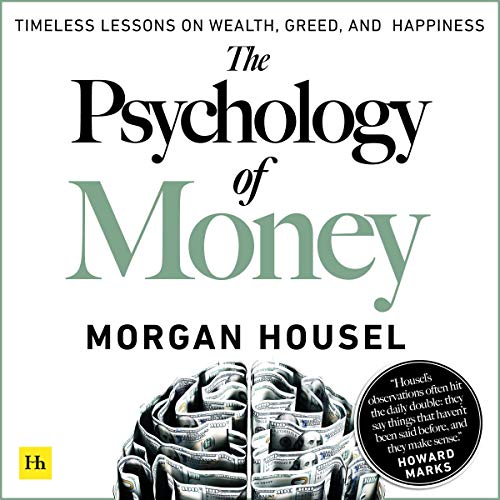Secrets of Success: The Millionaire Next Door Summary
“The Millionaire Next Door” by Thomas J. Stanley and William D. Danko offers a revealing glimpse into the lives of America’s wealthy individuals. Contrary to common assumptions, these millionaires lead modest lifestyles and prioritize financial independence. In this summary, we’ll explore key insights from each chapter, shedding light on their frugal habits, strategic mindset, and wealth-building strategies.
Table of Contents
ToggleChapter 1: Meet the Millionaire Next Door
Stanley and Danko introduce the concept of the “millionaire next door,” challenging the stereotype of wealthy individuals as flashy spenders. They reveal that many millionaires live in average neighborhoods, drive ordinary cars, and work in unassuming professions. Through extensive research and surveys, the authors highlight the prevalence of these “prodigious accumulators of wealth” (PAWs) who quietly amass significant fortunes through disciplined saving and investing.
By debunking the myth of the wealthy elite, they set the stage for understanding the principles of wealth accumulation shared throughout the book.
The authors provide fascinating insights into the demographics and characteristics of millionaires next door, dispelling common misconceptions about their lifestyles. Through statistical analysis and anecdotal evidence, they demonstrate that wealth is within reach for individuals from diverse backgrounds and professions. By highlighting the traits and behaviors that distinguish millionaires next door, Stanley and Danko offer readers a roadmap for achieving financial success and security.
Chapter 2: Frugal Frugal Frugal

Frugality emerges as a defining characteristic of millionaires next door. Stanley and Danko delve into the frugal habits that underpin their financial success. They emphasize the importance of living below one’s means, avoiding debt, and prioritizing saving and investing. By examining the spending patterns of millionaires, the authors demonstrate how frugality enables them to accumulate wealth steadily over time.
Whether it’s buying used cars, seeking out bargains, or prioritizing investments over material possessions, millionaires next door adhere to a disciplined approach to financial management that sets them apart from the average spender.
In this chapter, readers gain practical insights into the mindset and behaviors of millionaires next door. Stanley and Danko provide actionable tips for embracing frugality in daily life, from creating and sticking to a budget to resisting the temptation of lifestyle inflation. By adopting the principles of frugality outlined in this chapter, readers can lay the foundation for long-term financial success and security.
Chapter 3: Time, Energy, and Money
Efficient allocation of resources is a key theme in the journey to wealth. Stanley and Danko discuss the value of time and energy in the wealth-building process. They emphasize the importance of investing these assets wisely, whether through education, career advancement, or entrepreneurial endeavors.
By prioritizing activities that align with their financial goals, millionaires next door maximize their productivity and achieve greater success in wealth accumulation. Through strategic planning and disciplined execution, they leverage their time and energy to create opportunities for financial growth and personal fulfillment.
In this chapter, readers learn how to optimize their use of time and energy to enhance their financial well-being. Stanley and Danko provide strategies for setting and achieving financial goals, managing priorities, and avoiding time-wasting activities. By aligning their time and energy with their values and objectives, readers can increase their productivity and effectiveness in pursuing financial success. This chapter underscores the importance of intentionality and focus in the wealth-building process.
Chapter 4: You Aren't What You Drive

Contrary to popular belief, millionaires next door don’t measure their success by the cars they drive or the houses they own. Stanley and Danko explore the concept of “big hat, no cattle,” where individuals prioritize appearance over substance. Through real-life examples, they illustrate how millionaires next door prioritize value over status symbols, opting for reliable transportation and modest homes. By avoiding the trap of lifestyle inflation, they ensure that their wealth continues to grow steadily over time. This chapter underscores the importance of prudent spending habits and maintaining a long-term perspective on wealth accumulation.
In this chapter, readers gain insights into the relationship between material possessions and wealth accumulation. Stanley and Danko challenge conventional notions of success and status, encouraging readers to redefine their priorities and aspirations. By examining their attitudes towards consumption and possessions, readers can identify opportunities to align their spending habits with their long-term financial goals. This chapter highlights the value of frugality and mindful consumption in building lasting wealth and security.
Chapter 5: Economic Outpatient Care
In this chapter, Stanley and Danko explore the dynamics of financial support within families, particularly the concept of “economic outpatient care.” This term refers to the excessive financial assistance provided by affluent parents to their adult children.
The authors discuss how well-intentioned parental support, such as paying for children’s education, providing down payments for homes, or offering ongoing financial assistance, can unintentionally hinder the financial independence and self-sufficiency of adult children. They highlight the potential negative effects of this support, including enabling dependency, fostering a sense of entitlement, and undermining the recipients’ motivation to achieve financial success on their own.
Stanley and Danko provide insights into the implications of economic outpatient care on both the recipients and the providers of financial assistance. They offer guidance on setting boundaries and fostering self-reliance within family relationships to ensure long-term financial success for both generations.
Overall, Chapter 5 delves into the complexities of family financial support and the importance of promoting financial independence and responsibility among adult children. It emphasizes the need for parents to strike a balance between supporting their children and empowering them to achieve financial success on their own terms.
Chapter 6: Affirmative Action, Family Style

In this chapter, Stanley and Danko explore the role of affirmative action in wealth accumulation within families. They highlight the importance of instilling financial responsibility and self-reliance in future generations. Through anecdotes and case studies, the authors demonstrate how millionaires next door empower their children to make sound financial decisions and cultivate a mindset of wealth-building.
By passing down values of frugality, discipline, and entrepreneurship, they ensure the continuity of their family’s prosperity. This chapter underscores the interplay between family dynamics and financial well-being, emphasizing the importance of fostering a supportive and empowering environment for wealth accumulation.
In this chapter, readers gain insights into the strategies and practices that facilitate intergenerational wealth transfer. Stanley and Danko provide practical advice for parents on instilling financial literacy, discipline, and resilience in their children. They discuss the importance of leading by example and fostering open communication about money within the family. By cultivating a culture of financial responsibility and stewardship, readers can lay the groundwork for their family’s long-term prosperity and success. This chapter highlights the transformative power of affirmative action in shaping the financial future of generations to come.
Chapter 7: Find Your Niche
Finding one’s niche or area of expertise is essential for wealth-building success. Stanley and Danko discuss the importance of identifying strengths, passions, and opportunities in this chapter. They explore the various pathways to wealth, whether through entrepreneurship, investments, or specialized skills.
Through real-life examples, the authors illustrate how millionaires next door capitalize on their unique talents to generate income and build wealth. By leveraging their strengths and pursuing opportunities that align with their interests, they create pathways to financial success and personal fulfillment.
In this chapter, readers learn about the importance of aligning their career choices and financial goals with their passions and strengths. Stanley and Danko provide strategies for identifying and capitalizing on opportunities for wealth creation, whether through traditional employment or entrepreneurial ventures. They discuss the value of pursuing niche markets and industries where one can leverage their expertise and interests to achieve financial success.
By focusing on areas of specialization and differentiation, readers can maximize their earning potential and create opportunities for long-term wealth accumulation. This chapter underscores the importance of passion, purpose, and innovation in building a successful and fulfilling career.
Chapter 8: Jobs: Millionaires versus Heirs
In the final chapter, Stanley and Danko compare the wealth-building strategies of self-made millionaires to those who inherit their wealth. While both paths can lead to affluence, millionaires next door demonstrate the value of hard work, discipline, and resilience in achieving financial success.
The authors highlight the importance of education, career advancement, and strategic financial planning in building wealth over time. By adopting these principles, individuals can emulate the success of millionaires next door and realize their wealth-building aspirations.
Readers gain insights into the factors that contribute to financial success and longevity. Stanley and Danko explore the role of education, career choices, and financial habits in shaping individuals’ wealth trajectories. They discuss the advantages and challenges associated with inheriting wealth versus building it from scratch, highlighting the importance of mindset and behavior in achieving lasting prosperity.
By examining the experiences of self-made millionaires and heirs, readers can glean valuable lessons and strategies for navigating their path to wealth. This chapter underscores the importance of hard work, determination, and strategic planning in achieving financial independence and security.
Who Should Read This Book

“The Millionaire Next Door” is essential reading for anyone who aspires to achieve financial independence and build long-term wealth. Whether you’re just starting your career or seeking to enhance your existing financial strategies, this book offers invaluable insights and practical advice that can help you make informed decisions and pursue your financial goals with confidence.
If you’re tired of living paycheck to paycheck and want to break free from the cycle of debt and financial insecurity, “The Millionaire Next Door” provides a roadmap for achieving lasting prosperity.
Why You Should Read This Book
“The Millionaire Next Door” offers more than just financial advice – it provides a fresh perspective on wealth and success that challenges conventional wisdom and inspires readers to rethink their approach to money and lifestyle. By debunking common myths about millionaires and showcasing real-life examples of ordinary individuals who have achieved extraordinary financial success, the book offers hope and encouragement to anyone seeking to improve their financial situation.
Through engaging anecdotes, statistical analysis, and practical tips, “The Millionaire Next Door” offers a comprehensive guide to building wealth and achieving financial freedom. Whether you’re interested in learning about budgeting, investing, or cultivating a wealthy mindset, this book covers all the essential topics you need to know to succeed financially. With its timeless wisdom and actionable insights, “The Millionaire Next Door” is a must-read for anyone who wants to take control of their financial future and create lasting prosperity for themselves and their families.
Conclusion
“The Millionaire Next Door” offers invaluable insights into the habits, behaviors, and mindset of America’s wealthy individuals. Through frugality, discipline, and strategic financial management, millionaires next door achieve financial independence and long-term security. By applying the lessons from this book, readers can embark on their journey towards wealth and prosperity. With its practical advice and inspiring stories, “The Millionaire Next Door” is a timeless guide to achieving financial success and building a fulfilling life.





